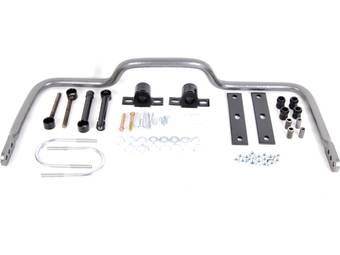Free Shipping on Orders Over $100
1997 GMC Savana Van Sway Bars and Stabilizer Bars
Sway Bars
Sway bars, also known as stabilizer bars or anti-roll bars, are a critical component of a vehicle’s suspension system. These components are essentially long torsion springs stretching between the driver and passenger front or rear wheels. This spring reacts to torsion, or twisting, as with any scenario where one side of the suspension loads up more than the other. Sway bars push against this twisting motion, tying both wheels of the same axle together, thus keeping the suspension level and planted.
Sway bars can be found on most vehicles, from massive lifted trucks to low sports cars. When cornering in a sporty ride, sway bars help to reduce body roll and improve traction. On a lifted pickup, sway bars help to stabilize the suspension through turns and during rapid maneuvering, especially at highway speeds.
Selecting Sway Bars
While choosing sway bars can seem like an endeavor, it’s a relatively simple process if you know what to look for!
Position: Front vs. Rear
As a rule of thumb, if your vehicle has a sway bar on one axle, it should also have one on the other. Sway bars operate independently, as the front sway bar manages the front chassis roll and grip, while the rear sway bar manages the rear chassis roll and grip. When ordering aftermarket sway bars, most come in a kit containing both front and rear replacements in balanced spring rates, ensuring stable and predictable handling characteristics.
Rate and Material
Sway bars come in several materials and spring rates for different applications and vehicles. After all, you wouldn’t want the same rate sway bar on a compact sports car as a heavy-duty ¾-ton pickup!
Different material grades, spring rates, and hollow/solid constructions deliver dramatically different performance. If you’re unsure which configuration is best suited for your vehicle and driving style, contact the experts.



